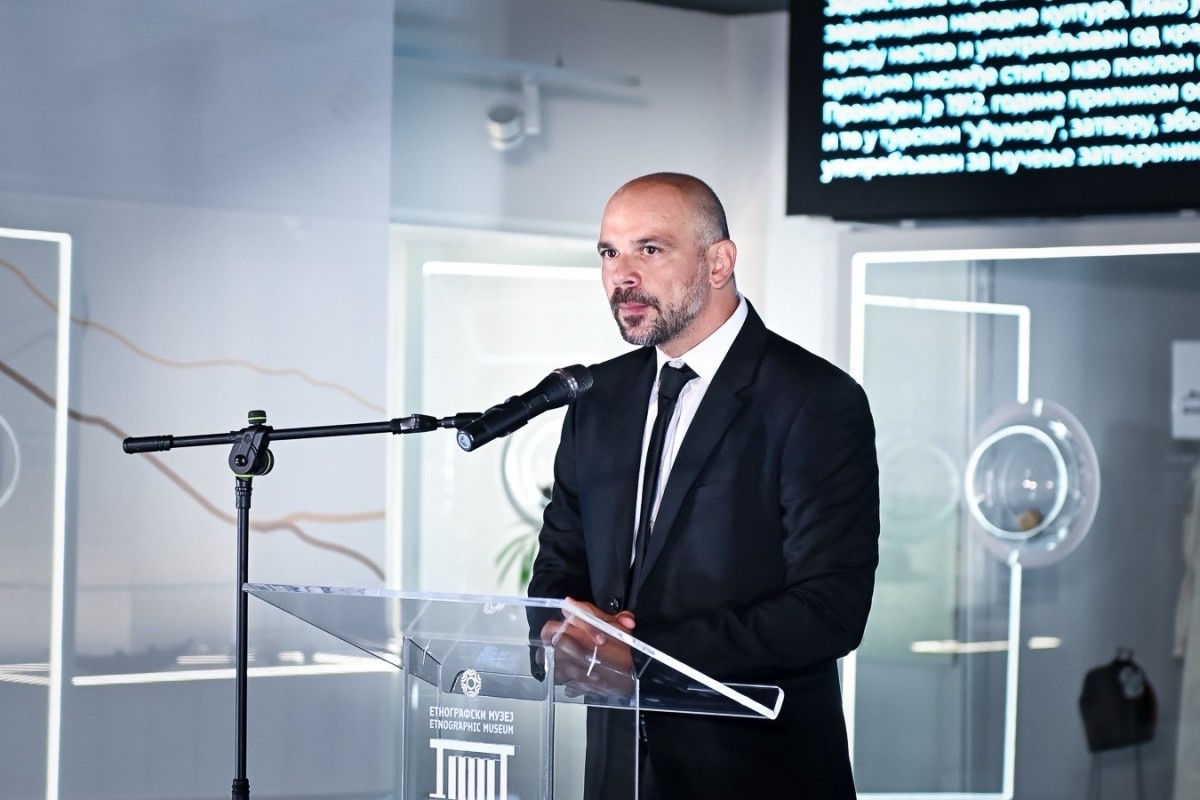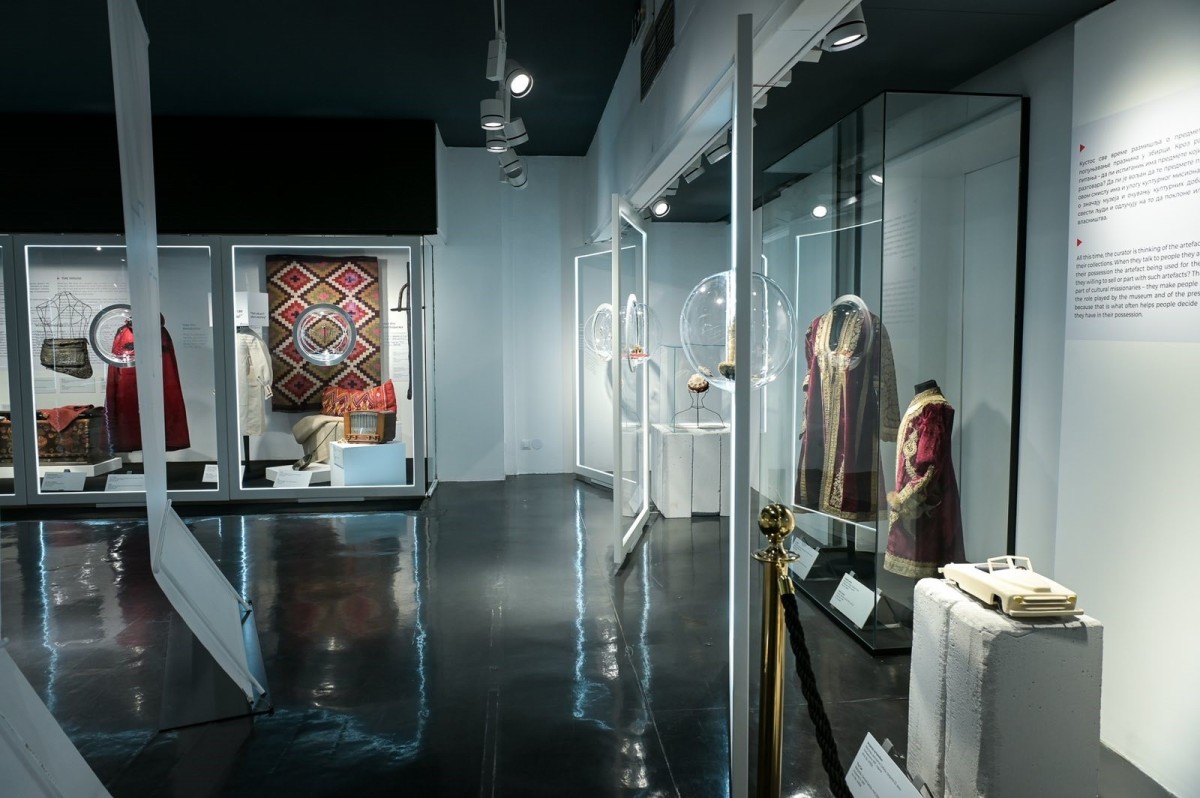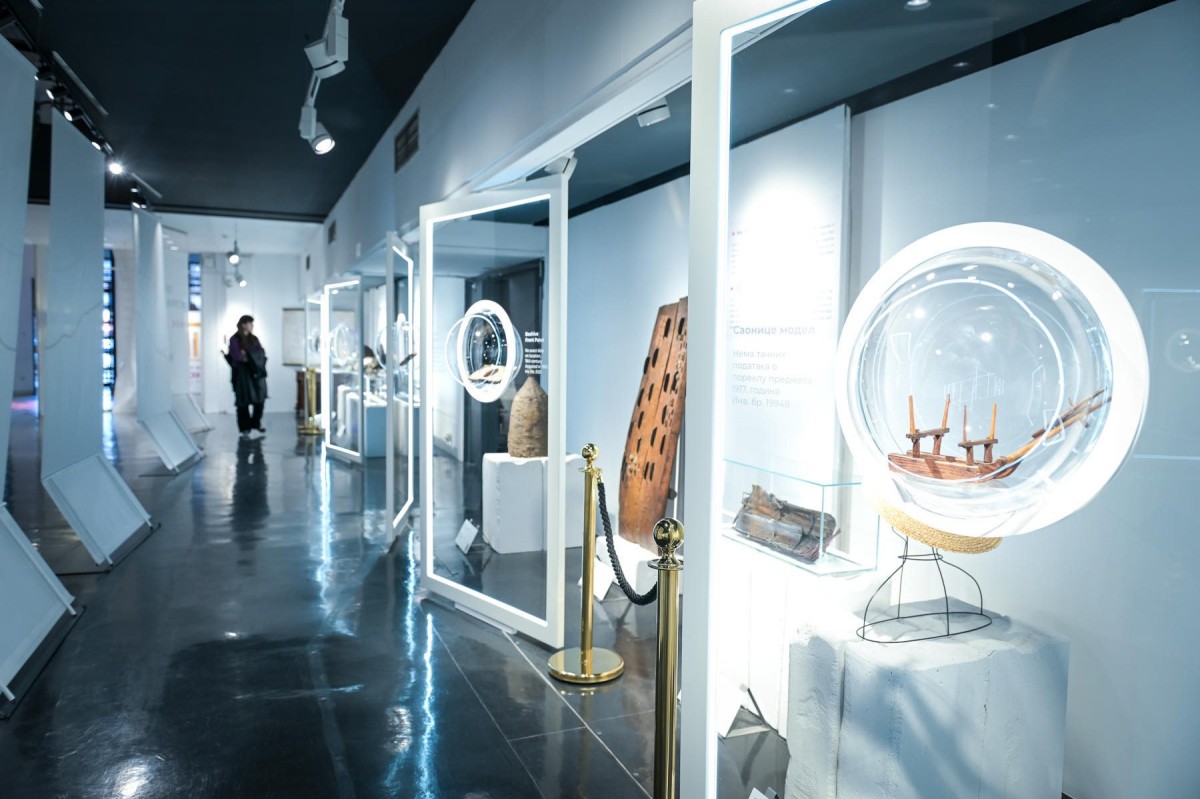The Ethnographic Museum Celebrates 120 Years with New Visions for the Future

Marko Krstić, the director of the Ethnographic Museum in Belgrade, shares insights into the institution’s 120-year journey of preserving cultural heritage. In this interview, he discusses the museum’s future vision, exciting plans for a new permanent exhibition, and the evolving role of tradition in modern society. As the museum prepares for its next chapter, Krstić reveals how innovation and respect for heritage will shape its path forward
Can you tell us more about the celebration of the 120th anniversary of the Ethnographic Museum in Belgrade through the programme ‘120 Days for 120 Years’?
To mark the 120th anniversary of the Ethnographic Museum’s first permanent exhibition, we have presented an interactive exhibition titled “Memory—Field Research of the Ethnographic Museum.”
As suggested by its name, this exhibition symbolically represents the museum’s long history and the work that curators do. The main idea when designing the exhibition was to show field research as the way museum collections are enriched. A curator at the Ethnographic Museum deals with culture that people have inherited from their ancestors but also lives as their own culture. Since people create culture, curators—ethnologists/anthropologists—conduct their research on folk culture among the people in field research, where they collect and discover material, written, and oral evidence.
The Ethnographic Museum preserves many ethnographic items in separate collections, ensuring the richness of our cultural heritage
The exhibition “Memory – Field Research of the Ethnographic Museum” particularly emphasises the identity and continuity of research in all areas where the Serbian people and Serbian heritage are found. In addition to the retrospective of the items discovered by the museum’s curators over a century, the exhibition is enriched with modern technological experiences and technologies – visitors can experience the exhibits using MP4 players and headphones, and the exhibition guidance is available through an app in Serbian and English. The app is tailored to the environment and narrative, engaging all senses, and certain traditional customs are available through augmented reality. Moreover, a digital map on a touchscreen provides visitors with a network of precise locations where items were found, along with additional information about the exhibits.
How has the Ethnographic Museum in Belgrade managed to survive all these years as one of the oldest museums in the Balkans?
Through the work and great passion of all the museum’s employees over the decades, I would remind your readers that the Ethnographic Museum is one of the oldest museums on the Balkan Peninsula. It was founded in February 1901, but its roots go deeper into the past. The collection of ethnographic items began in the mid-19th century, and the National Museum of Serbia contained some ethnographic items as early as 1844.
Thanks to the preservation of traditional ways of life in the Balkans after the First World War, the museum’s collection continued to grow, and in 1926, the first volume of the “Journal of the Ethnographic Museum” was published, which continues to be regularly issued. After the Second World War, systematic ethnological studies of ethnographic areas began, many individual research projects were conducted, and work started on systematic and scientifically based conservation of items. In 1951, the museum moved into the former Belgrade Stock Exchange building at 13 Studentski Trg, built in 1934.
Our goal is to present why ethnography is essential in the modern world and what it tells us about ourselves, both as individuals and as a nation
Today, the Ethnographic Museum preserves many ethnographic items divided into separate collections (furniture, jewellery, customs, folk costumes, folk architecture, economy, livestock breeding, transport, cult objects), has one of the wealthiest specialist libraries in the Balkans, publishes specialist publications, has a conservation department that processes almost all types of materials, boasts extensive exhibition space, organises significant ethnographic research, and possesses a lot of will and knowledge to ethnologically and anthropologically study everything related to Serbian folk culture and heritage. In other words, we need to know who we are, what we are, and on what foundations traditional living culture was built.
You are coming to the position of acting director of the Ethnographic Museum from the position of director of the Institute for the Study of Cultural Development. How do you plan to apply your experience to your work at the Ethnographic Museum in Belgrade?
My arrival at the head of the Ethnographic Museum is driven by the need to put things in order and move the museum forward. In this regard, the only preconception I have had and still have is finding the best way to succeed. I have always been interested in vision, not revision. I do not see myself as a director in the traditional sense, but as someone who expresses their abilities and skills in a way that understands and embraces the time we live in, with the idea that there is no progress without expert people, fresh ideas, and teamwork. Of course, you also need to have good results that recommend you. I believe these principles apply to any institution or company.
What is your vision for the future of the Ethnographic Museum?
To ensure that the Ethnographic Museum remains true to itself—faithful to tradition, serving the state—by protecting and preserving everything that is the spiritual foundation of the Serbian people and the citizens of Serbia while at the same time becoming a lively, interactive, attractive, and modern museum, capable of presenting why ethnography is essential in the contemporary world and what it tells us about ourselves, both as individuals and as a nation, in two words: tradition and communication.

Can you share some details about the new permanent exhibition you plan to open for EXPO 2027?
After 23 years, the Ethnographic Museum has begun preparations for the project of a new permanent exhibition, which we will officially open in 2027, during the EXPO year, on the museum’s anniversary, the 20th of September. This is our strategic goal and, at the same time, a great responsibility. I cannot reveal any details except that the new permanent exhibition will be both professionally and visually spectacular.
How do you see the current situation in Serbia’s cultural scene? Is it satisfactory, and is there room for further development?
There is never enough culture, especially in times that are not particularly cultural. Increasing its visibility in the media and investment in culture are the keys to its progress. Specifically, for the first time in modern Serbian history, we have significant financial investments in museums in the form of two new buildings: the Nikola Tesla Museum and the Natural History Museum. The year 2027 is not far off, and we will see how important this is for culture and the promotion of Serbia and all the museums in Serbia. This is an essential message for all of us.
What does the MUSEUMS 4 YOU ticket offer those who purchase it?
First, this project is being implemented for the first time in Serbia. The goal is to enable all users—our citizens and foreign tourists—to visit four museums for one ticket: the Ethnographic Museum, the Museum of Yugoslavia, the Natural History Museum, and the Museum of Science and Technology. The project was developed in coordination with the Republic Secretariat for Public Policy, with the cooperation and support of the Ministry of Culture and Tourism and Youth. With a combined ticket for four museums in Belgrade, visitors save money, and the ticket can be used within seven days of the planned visit date. The idea is to implement successful practices from the world of museology here and, through online ticket purchases via museum websites, to promote Serbian cultural heritage in the most accessible way possible.

This interview was originally published in the October edition of Diplomacy&Commerce magazine, issue #99.
Interview conducted by: Mijat Kontić
Photos by: Ethnographic Museum